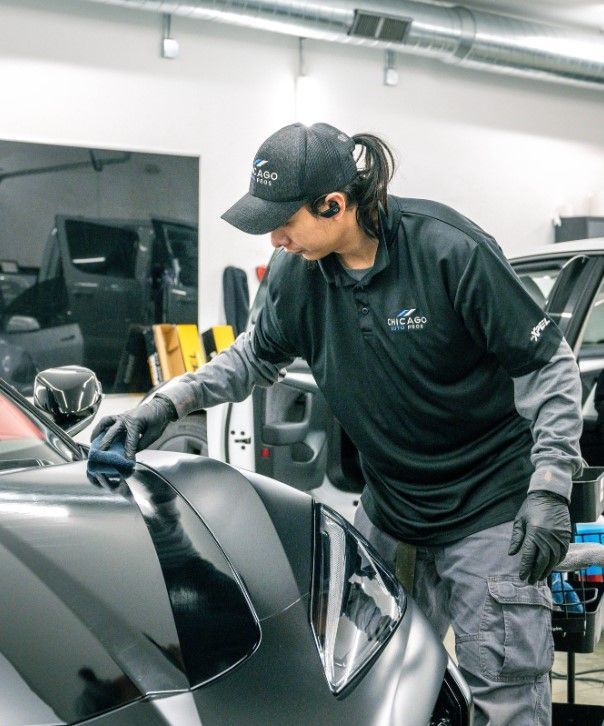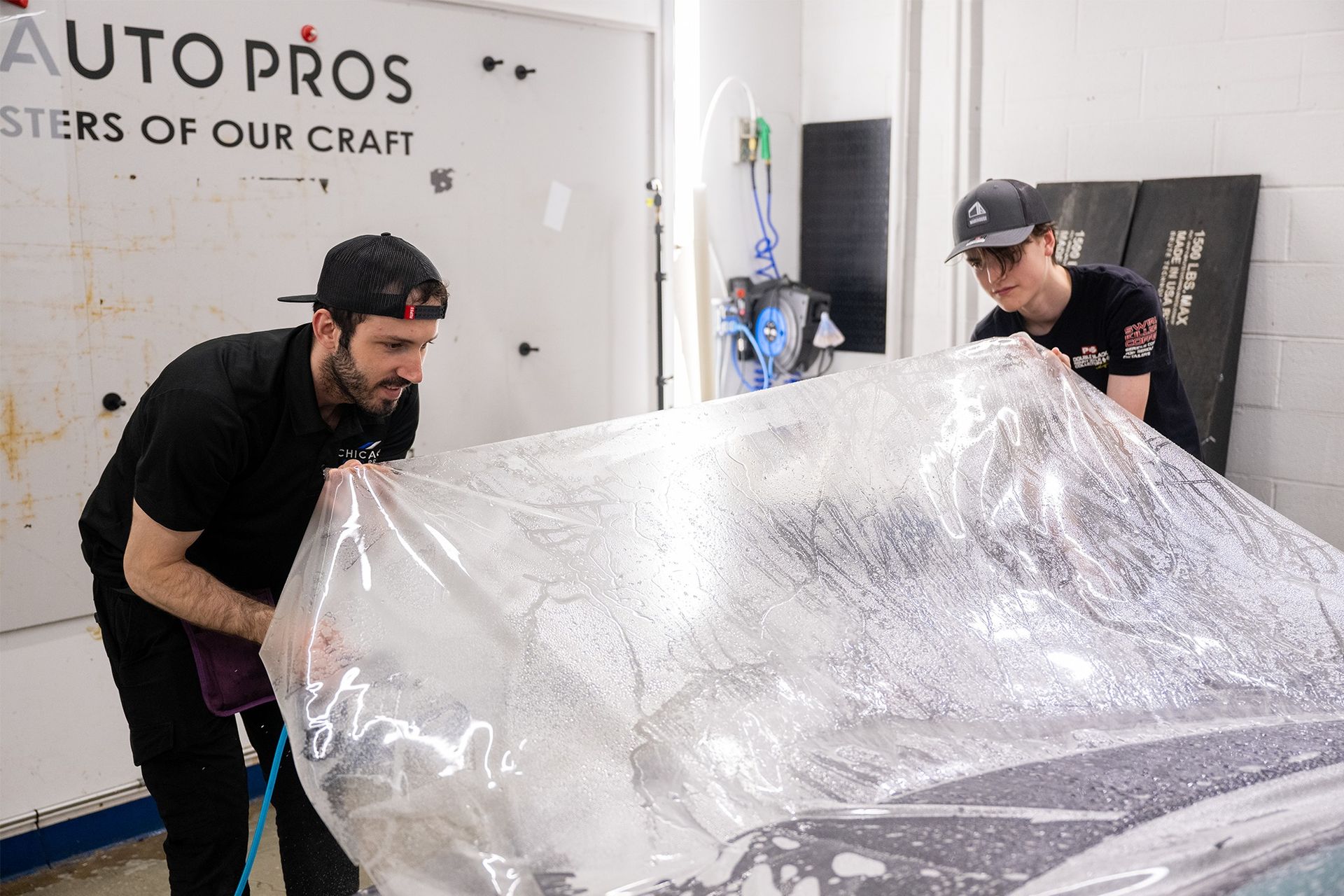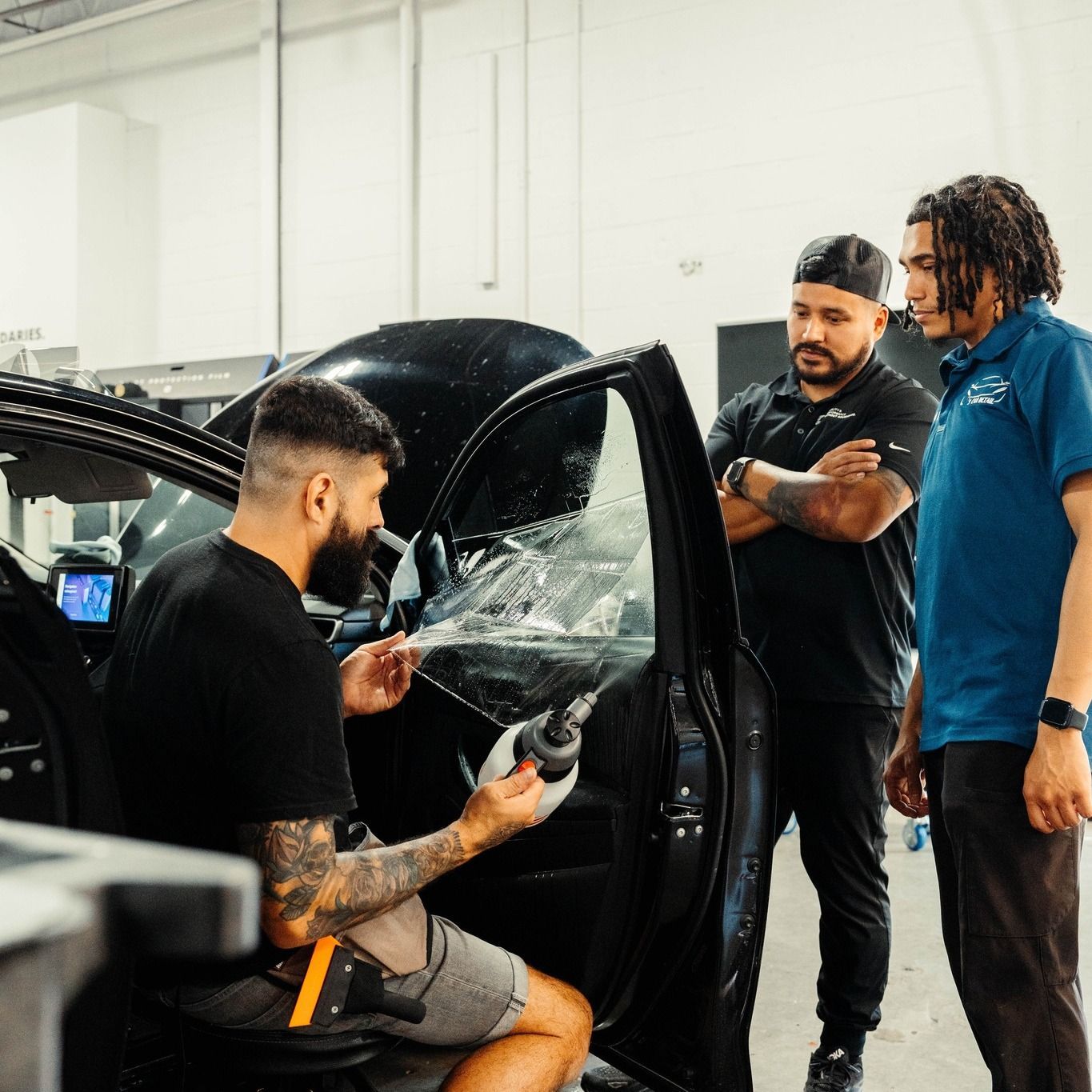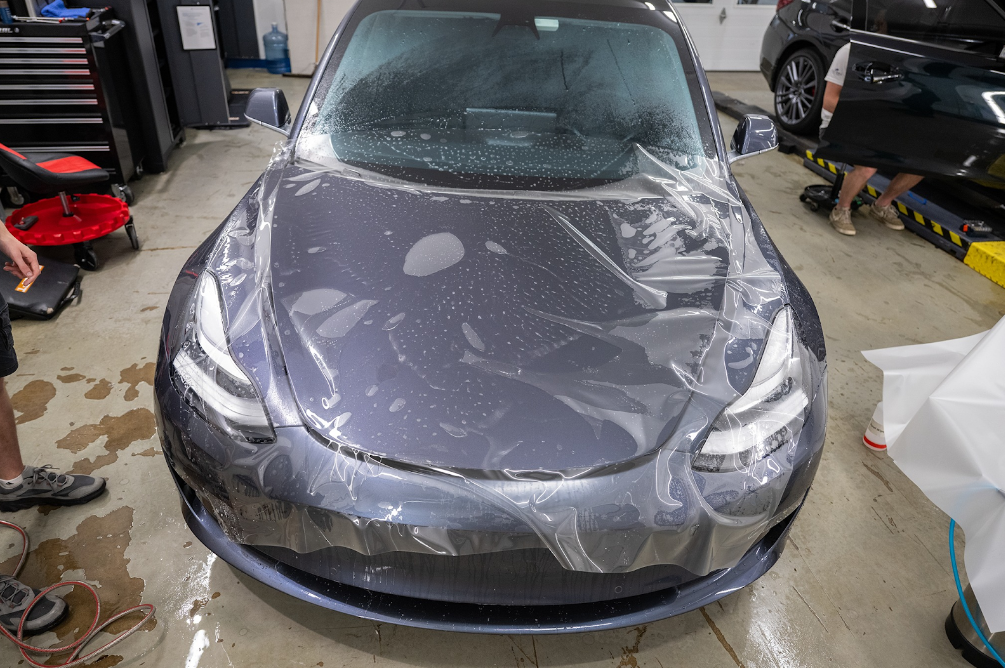Graphene Coating VS Ceramic Coatings: What's the Difference?
If you're in the market for a vehicle coating, the number of possibilities available will likely be confusing. Of course, you'll want the coating that will give you the best protection and performance. One of the main contenders in the coating arena is Graphene, which has quickly risen in popularity in recent years, particularly in auto detailing shops.
But how does it compare to one of its main competitors, ceramic coatings, which are frequently used for ceramic coating services? What's best for your car? This blog compares graphene and ceramic coatings, so you can easily choose the right one.
Let's explore the differences between these two great car coatings and how to prevent water spotting and other issues!
What Is a Graphene Coating?
Graphene coating is a simple solution for a wide range of corrosion protection, lubrication, and abrasion issues caused by wear. This coating has emerged as one of the most effective materials for providing corrosion and abrasion resistance. Due to its unique properties and durability, supporters of graphene coating argue that it is more cost-effective than ceramic coatings.
Additionally, it produces less wasted energy as its application does not require high temperatures or other extreme operating conditions. Furthermore, it serves as an effective barrier to many chemical substances, making it ideal for both indoor and outdoor use. On the other hand, opponents believe that ceramic coatings provide better environmental protection than graphene coatings.
Ceramic coatings can be applied at high temperatures, providing complete coverage and a uniform finish. Many ceramic coatings are proven to have superior mechanical strength when exposed to certain acids, bases, solvents, temperature extremes, or radiation exposure. Regardless of which side of the argument you support, there's no denying that graphene coatings offer significant advantages over traditional ceramic coatings.
Its lightweight and flexibility make it a great option for environments with limited space, while its superior performance in corrosion protection makes it an ideal choice for outdoor settings. Let's now shift our attention from what we already know about graphene coatings to how its characteristics make it superior to ceramic coatings in a variety of contexts as we continue our discussion about these two protective materials.
- Graphene coatings offer superior strength and hardness than ceramic coatings, with a reported increase in yield strength by up to 34%.
- The thermal conductivity of graphene is much higher than ceramic coatings at approximately 5300-5400 W/mK, allowing for faster heat transfer.
- Graphene coatings offer high corrosion resistance due to their atomic tightness and uniformity which prevents permeation of aggressive substances.
Graphene Advantages Over Ceramic Coatings
A graphene coating has several advantages over ceramic coatings. First, graphene is significantly more durable than ceramic coatings due to its flexibility and abrasion-resistant properties. It is also much lighter than ceramic coatings, making it easier for manufacturers to incorporate into their products.
Graphene also has superior heat dissipation, making it an excellent choice for high-temperature objects such as automotive engines or lighting fixtures. Some critics of graphene coatings argue that ceramic coatings are more cost-effective. While this is true, graphene has the advantages of increased longevity and performance, which can offset the higher cost in the long run.
In addition, compared to other coating materials like carbon nanotubes or polymers, graphene appears to produce fewer pollutants, according to evidence from some researchers. When deciding between graphene coating and ceramic coating for your vehicle, it largely depends on the individual application and desired results.
An auto detailing shop experienced in both types of coatings, like Chicago Auto Pros, would be able to provide valuable insight and guidance to help you make the best choice for your car.
For those looking for enhanced performance and improved environmental protection, graphene coatings offer many advantages over ceramic coatings. With these benefits in mind, let's look at some of the performance benefits of using graphene coatings. Detailers and professionals alike have lauded graphene ceramic coatings for their superior heat absorption, ease of maintenance, and high-quality results when applied to surfaces such as a car's paintwork.
Performance Benefits
Graphene coatings outperform ceramic coatings in terms of performance. They provide superior resistance to corrosion, wear, and UV damage. This significantly reduces the weight and thickness of the substrate compared to traditional ceramic coatings, which are typically thicker and heavier.
Another significant benefit is their improved mechanical properties. With higher tear strength and hardness, they are more durable than traditional ceramic coatings. This makes them ideal for protecting against wear from erosion and long-term usage, especially in industries involving harsh environments and tools or equipment.
Furthermore, graphene coatings offer improved electrical conductivity, enabling better performance in electronic devices and circuits.
All these factors combined make graphene coating the clear choice for obtaining performance benefits over traditional ceramic coatings.
Its superior insulation and improved physical properties provide significant advantages for industries seeking a strong protective cover with low weight and thickness. Therefore, there is no question that graphene coatings are the better choice when it comes to performance benefits.
Let's look further into the protection benefits provided by these special coatings.
Protection Benefits
When it comes to protection benefits, graphene and ceramic coatings offer their own unique advantages and drawbacks. Graphene coatings provide superior protection against UV radiation and acid rain, while ceramic coatings offer a better barrier against extreme temperatures.
Additionally, graphene coatings have the potential to be self-cleaning, repelling dirt particles instead of allowing them to adhere to the surface. Both coatings are also corrosion-resistant and can withstand heat expansion.
It is crucial to consider not only the technical performance benefits but also the protective capabilities of each coating before making a selection. What may be suitable for one situation might be less beneficial in another. The choice depends on individual needs and goals for protecting assets from environmental damage or physical wear.
Now that we have covered the performance and protection benefits, let's compare the material composition and applications of graphene and ceramic coatings.
The Difference Between Graphene and Other Ceramic Coatings
When it comes to protective coatings, both graphene and ceramic coatings provide excellent resistance to damage and wear. Graphene, in particular, stands out for its extreme strength and resistance. It consists of a one-atom-thick layer of carbon atoms that is incredibly thin yet exceptionally strong, providing superior protection compared to traditional polymers or metals.
Ceramic coatings, on the other hand, are well-known for their durability, chemical resistance, and excellent heat resistance. Graphene and ceramic coatings both form a molecular layer that adheres to the surface under consideration, providing cushioning and support to absorb and deflect impacts.
Professionals skilled in the application of graphene ceramic coatings can harness their unique properties for optimal performance and protection. This layer also prevents water absorption, dust buildup, UV rays, corrosion, rust, and debris accumulation, making it an excellent choice for car owners looking to maintain their vehicle's exterior appearance.
However, there are some differences to consider. Graphene coatings, such as graphene oxide, provide a glossy finish, but they require advanced technology and expensive equipment, which can add significant costs to the process. In addition, more difficult prep work might be necessary before applying a graphene oxide coat.
Conversely, ceramic coatings generally require less complex procedures, and specialized training may not be necessary depending on the product used, allowing for more flexibility and potential savings on labor costs. These factors make the choice of coating for a car's exterior a crucial one.
In addition to providing protection, graphene's unique appearance gives it an aesthetic advantage, allowing for a variety of applications, such as interior design elements.
Therefore, it's important for car owners to consider all aspects, including cost and appearance, before deciding if graphene is the best choice for their car care needs. By comparing graphene and ceramic coatings side by side, we can make a more informed decision that meets our needs while also providing the best value for money.
Comparison of Graphene and Ceramic Coatings
While both types of coating provide protection and strength to their respective substrates, there are key differences that set them apart. Graphene coatings are ideal for applications requiring an exceptionally strong layer of protection, as graphene has been shown to be roughly 200 times stronger than steel.
Additionally, graphene absorbs only 2.3% of light, making it transparent and virtually colorless, whereas traditional ceramic coatings may alter or distort the substrate's original color. Graphene coatings also excel in temperature management, remaining relatively cool even when exposed to extreme temperatures, and can significantly increase the overall thermal conductivity of a surface from 600 W/mK to 800 W/mK.
Conversely, traditional ceramic coatings tend to provide more chemical resistance than their graphene counterparts due to their higher burn-off rate and thicker film. While ceramics offer some degree of wear resistance, they are not as strong as graphene. As more UV light is blocked over time due to the thickness of the ceramic, it may also gradually turn yellow in appearance, leaving fewer visible signs of wear than graphene coatings, which typically maintain their appearance.
In terms of application complexity and cost, graphene tends to be easier and less expensive to apply compared to traditional ceramic coatings. Graphene coating protocols are simpler and require fewer steps compared to the multiple layers often needed for ceramic plating applications.
Additionally, despite the fact that special techniques are still needed to apply graphene coatings, this can be done relatively quickly and simply, in contrast to the laborious process of ceramic coating, which requires longer curing times.
Ultimately, graphene coatings are ideal for locations that require a strong yet lightweight layer of protection, such as metallic surfaces found on electric vehicles or airplanes. On the other hand, ceramic coatings may offer better chemical resistance in high-temperature environments, such as engines or exhaust manifolds.
The choice between the two should ultimately depend on the demands of the application and which qualities need to be prioritized: strength or chemical resistance.
Get Your Car the Ultimate Protection With Chicago Auto Pros Ceramic Coating Services in Lombard, IL
When it comes to surface protection, the choice between graphene coatings and ceramic coatings can be intriguing. While ceramic coatings have long been trusted for their durability and hydrophobic properties, graphene coatings offer a new dimension. With remarkable heat dissipation, chemical resistance, flexibility, and transparency, graphene coatings push the boundaries of surface technology.
At Chicago Auto Pros, we use the latest techniques and high-quality products to ensure a flawless finish. Plus, our skilled auto detailers are experts in applying ceramic coatings with precision and care.
Give us a call today for more information and to request a consultation!
We Make Your Car Look Beautiful
Founded with an unquenchable desire for automotive perfection, Chicago Auto Pros is a leader in paint protection efforts and aesthetic vehicle detailing services in Chicago, Illinois. When you bring your automobile to our Chicago-based detailing shop, you are sure to experience unmatched integrity, customer service excellence, and above all, absolute automotive perfection from the inside out. Choose the right auto detailing team - choose Chicago Auto Pros!
Lombard Location
207a Eisenhower Ln S, Lombard, IL, United States
Glenview Location
2075 Johns Ct, Glenview, IL, 60025, United States
Additional Service Areas
Tesla & EV Detail Specialists
Services Offered
Quick Links
All Rights Reserved | Chicago Auto Pros






